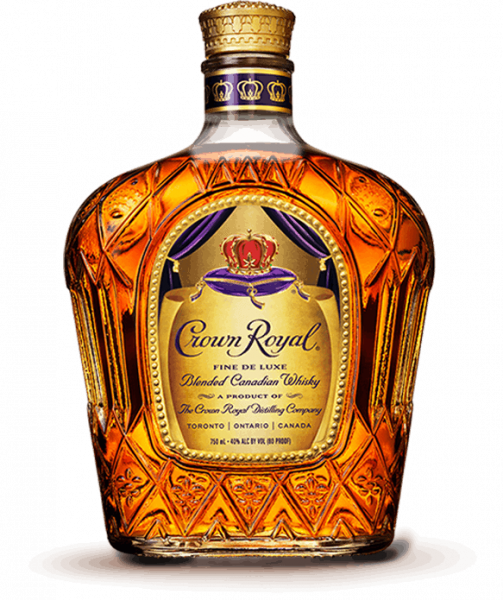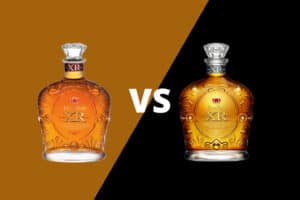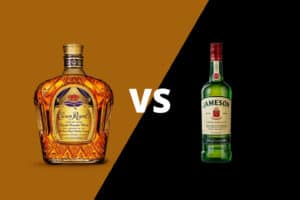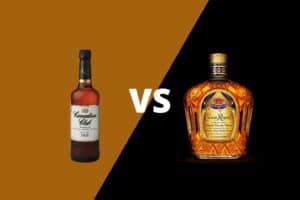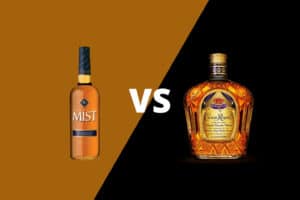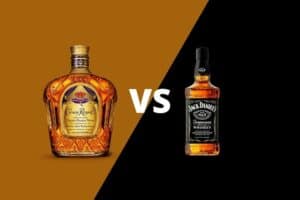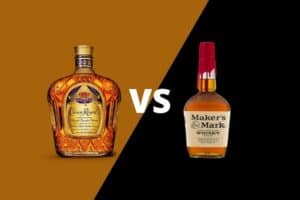Crown Royal Blended Canadian Whisky is one of the top-selling brands in the world in terms of volume.
Surprised? You shouldn’t be.
When it comes to the top whiskeys in the world, a few names are often top-of-mind. Johnnie Walker Scotch is the No. 1 selling whisky brand in the world. Jack Daniel’s Tennessee Whiskey is the No. 1 selling American whiskey. And Jim Beam Bourbon is the No. 1 selling bourbon whiskey.
If our friends up north take some umbrage at not being mentioned in the same breath with these greats —perhaps they should. In fact, the whole term ‘American whisky’ has an entirely different meaning as far as Canada is concerned.
If you’re a bourbon fanatic, this next stat might really surprise you: Crown Royal is the No. 2 whiskey in volume sales in the U.S., second only to Jack Daniel’s.
That’s right. More bottles of Crown Royal are sold in the U.S. than powerhouse bourbon brands like Jim Beam, Wild Turkey and Maker’s Mark.
Now that we’ve got your attention, let’s look at how Crown Royal has built a brand that places Canadian whisky on equal footing with the greats from the United States, Scotland, Ireland and Japan.
History
As far as brand names go, this origin story is pretty legit.
If you are going to call your whisky Crown Royal, it helps to have a regal heritage. So, it’s fitting this whisky began as a gift to a king.
In 1939, Canada was a loyal member of the recently created British Commonwealth of nations. And as the United Kingdom geared up for an impending confrontation with Nazi Germany and the Axis powers in World War II, it made sense to rally their North American countrymen to the Allied war cause.
What better way to call on your friends across the Atlantic than with a royal visit?
The trip by King George VI and Queen Elizabeth was a big deal. It was the first trip by a reigning monarch to North America and required transportation across the Atlantic by ship — during a conflict with an enemy navy boasting a superior submarine fleet. Upon arrival, the royal entourage would travel across the continent by train.
To welcome the monarchs, Canada rolled out all the stops.
Samuel Bronfman, president of Seagram’s, opened up the barrel houses of the company — which included the very popular Seagram’s V.O. and 7 Crown brands, among others — to create the best blend Canada could offer.
The result was called the Crown Royal. Ten cases of the spirit were presented to the king and queen, each bottled in handmade crystal decanters and encased in royal purple velvet bags, with gold stitching and thread.
Throughout the locomotive journey through North America, the whisky was a big hit to everyone who had a taste — British or Canadian. For the royal entourage and military attachés who accompanied them to be impressed by a Canadian whisky was significant — especially when you consider the fact that these same folks had perpetual access to the very best Scotch whiskies the world had to offer.
Crown Royal’s initial success went a long way in elevating the perception of Canadian whisky both at home and abroad.
Mashbill
Blended Canadian Whisky is not like bourbon. In many ways, it has more in common with blended scotch and Japanese whiskies when it comes to fermentation and production techniques.
Canadian distillers utilize traditions from two worlds — North America and Scotland. Like blended scotch, blended Canadian whisky is a combination of different types of whiskies. And, like bourbon and American rye whisky, spice from rye grain plays a vital role.
But while Scotland has hundreds of distilleries dotting the landscape north of Hadrian’s Wall, Canada does not have as rich of a distilling history. Scottish distilleries have behind them hundreds of years of tradition, distilling whisky from malted barley in copper pot stills for centuries before industrialization. U.K. law also requires single malt scotch to be distilled from 100 percent malted barley in a copper pot still. Blended scotch combines single malt with grain whiskies made primarily from corn (maize) or wheat grain and produced in a modern column still.
When the modern Coffey still was invented in the 1830s, there were only a handful of legal distilleries throughout what is today Ontario and Quebec. Those distilleries consolidated during industrialization and were broken up by a brief Canadian prohibition on alcohol sales — although it only lasted a year or so. As a result, Canadian whiskies must create diverse whisky flavors under one roof — as opposed to collecting barrels from numerous independent distilleries.
Another divergence from Scotland is the Canadian fondness for rye grain spice in their whisky. Like early American rye whiskey makers in Maryland and Pennsylvania, Canadian whisky distillers included the plentiful rye grain during fermentation. Hearty rye grain does well in the cold climate of Canada and, as a result, distillers had plenty of it after each harvest.
Today, Crown Royal uses five different mash bill recipes, 12 column stills and various types of wooden casks to produce about 50 individual whiskies to use as components in the blend. These component whiskies contribute a wide variety of flavor notes to the finished product. The five grain bills used utilize various proportions of rye, wheat, corn and malted barley — producing a wide range of flavor profiles for their blending team to utilize in each batch.
Distillation & Production Techniques
The Crown Royal Distillery is near Lake Winnipeg in Gimli, Manitoba. The production team benefits from the limestone-filtered fresh water beneath the lake, which is used during fermentation and to dilute the spirit to bottling proof. For a whiskey bottled at 80-proof, dilution water can make up over 60 percent of each bottle.
The use of mineral water helps remove iron and adds a softness to the water, which helps in fermentation and offers an improved flavor perception to the finished whisky. Both Kentucky and the Speyside region of Scotland are known for their world-class whiskeys and the limestone-fed aquifers that provide the water to make them.
Crown Royal uses 12 column stills to produce their whiskeys — making it one of the largest plants in North America in terms of capacity. The facility runs 24 hours, 7 days a week, to produce enough supply to meet a globally recognized brand.
Maturation
Crown Royal claims 1.5 million barrels are aging in the 51 barrel warehouses on the sprawling campus.
If you were to land a boat onto Pelican Beach on Lake Manitoba and walk the 2 kilometers or so to the Crown Royal Distillery, the whisky warehouses you’d encounter would be much different than what you would find in Kentucky. Each is only a few stories tall, in contrast to the multi-storied wood rackhouses that dot the Kentucky landscape. The cool Manitoba climate and the use of a variety of charred, toasted oak and reused casks make for a much different maturation process.
All Canadian whiskies are required to be matured for no less than three years in an oak cask, but the size of the barrel is unregulated. Crown Royal is a NAS — or Non-Age Statement — whisky, so we don’t have any additional information on the age of the barrels in any given batch.
Ownership
The Crown Royal brand is owned by distilled spirits behemoth Diageo PLC – the largest producer of distilled spirits on the planet.
Because Diageo is a publicly-held company, we can gain some valuable insights through their corporate communications. Like, despite pandemic-related losses in other product categories, Crown Royal has increased 8 percent in 2020 internationally, with growth in both the U.S. and Canadian domestic markets. In fact, the entire Canadian whisky category has sustained growth in the past few years on the back of Crown Royal’s continued popularity. Brand extensions such as Crown Royal Regal Apple, Crown Royal Vanilla and Crown Royal Peach — which won double gold in the flavored whiskey category at the San Francisco World Spirits Competition — have also increased in sales while the high-end Crown Royal Deluxe has suffered a decline due to pandemic consumption trends.
Price Point & Value
Crown Royal costs about $29 for an 80-proof 750mL bottle. Each large-format bottle comes complete with its signature purple bag — a replica of the decanters that traveled with King George via train across Canada in 1939. We should note, however, the version at your local liquor store does not include hand-cut crystal or actual gold thread.

